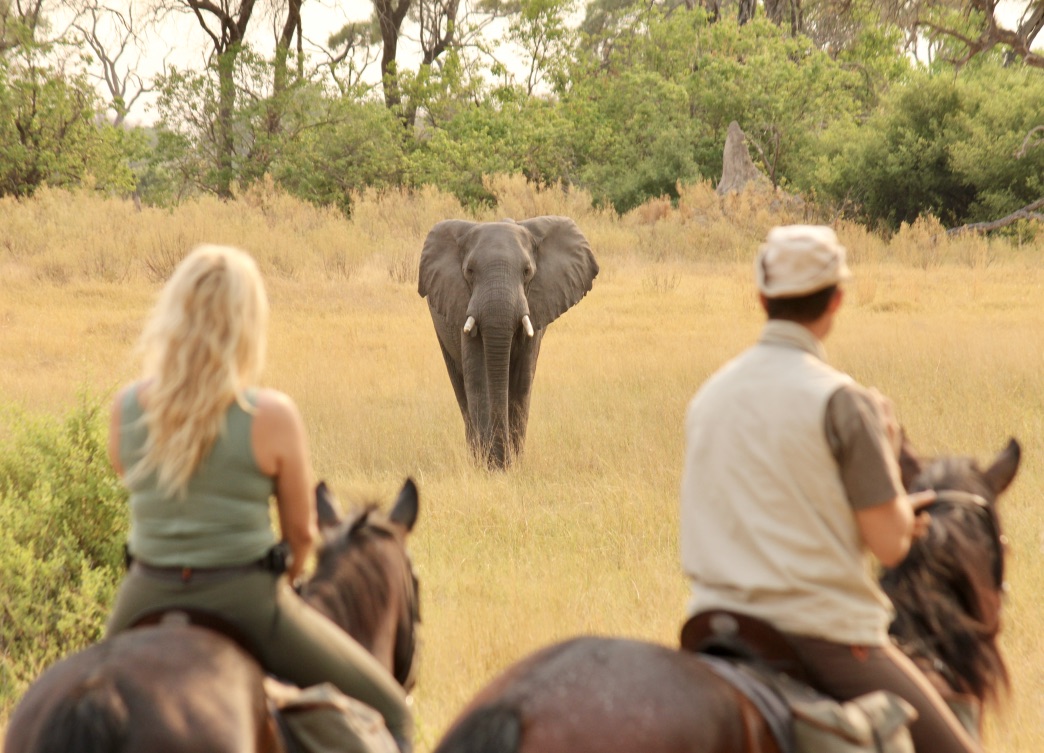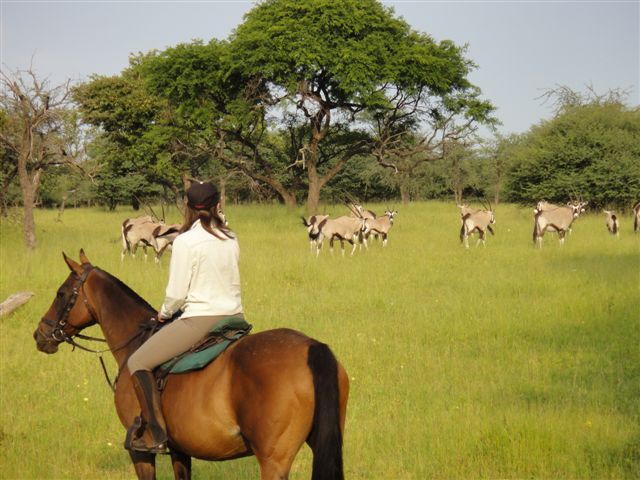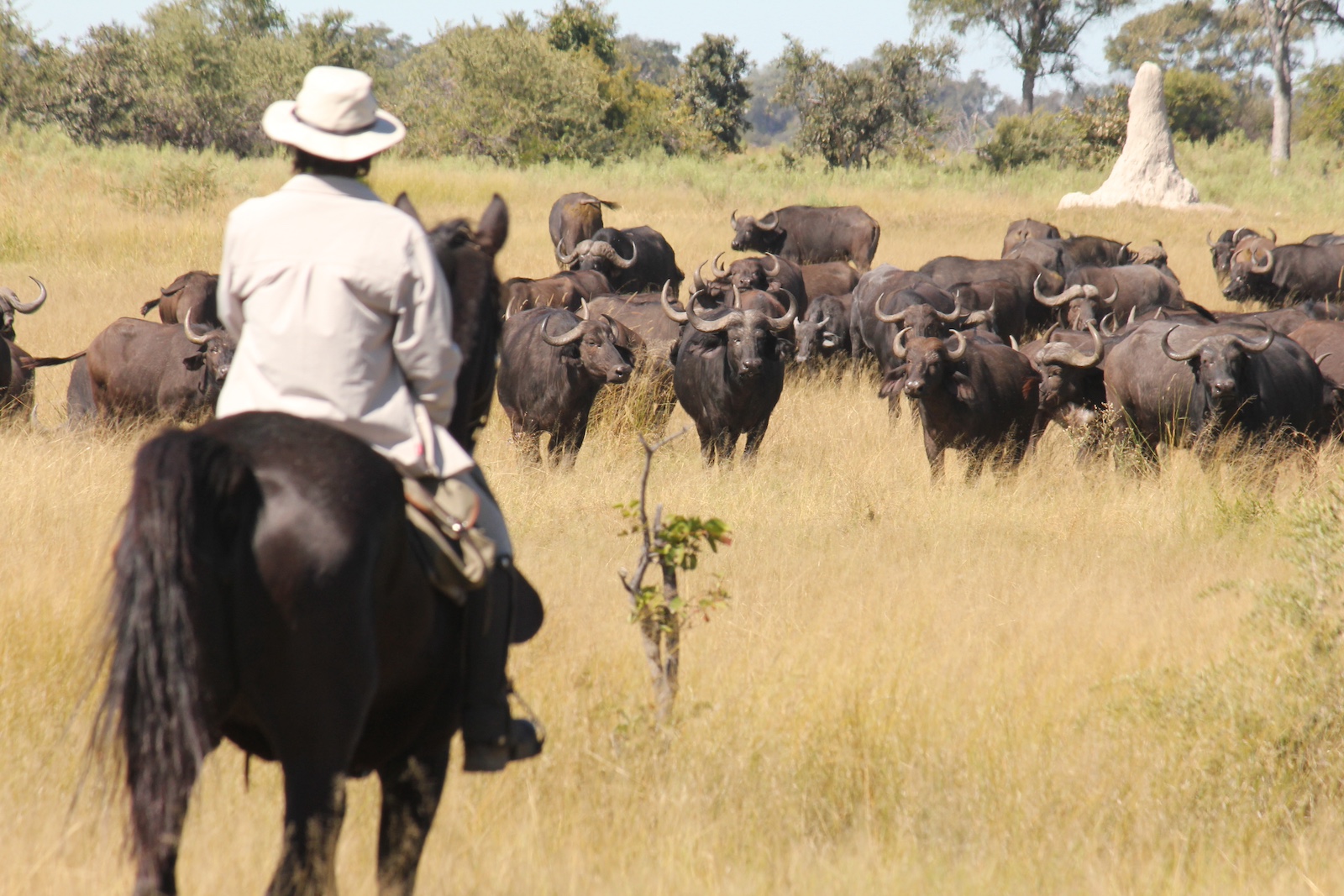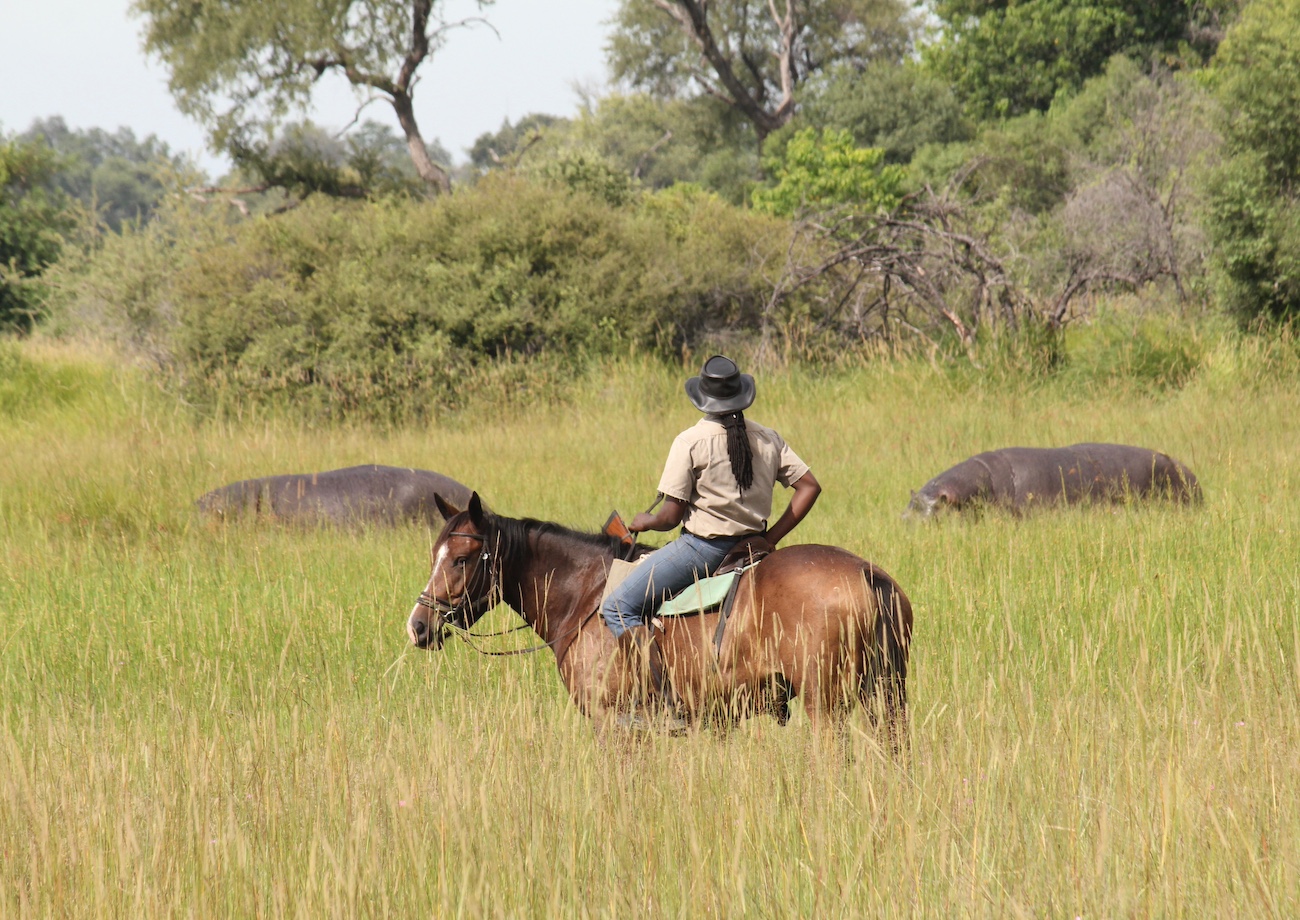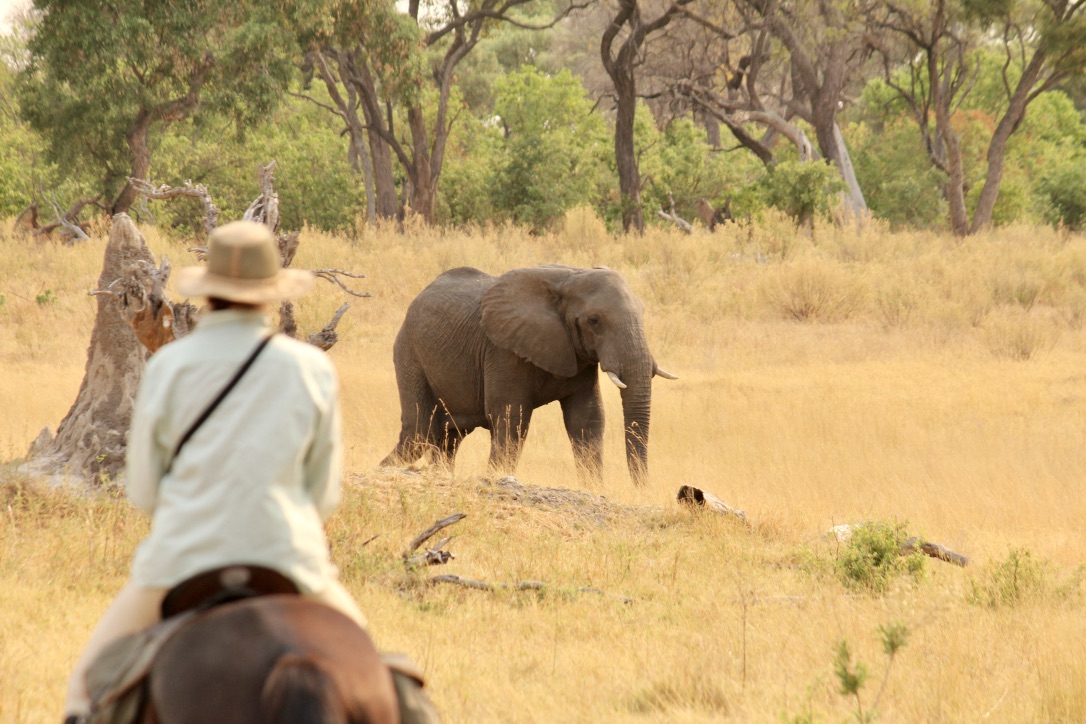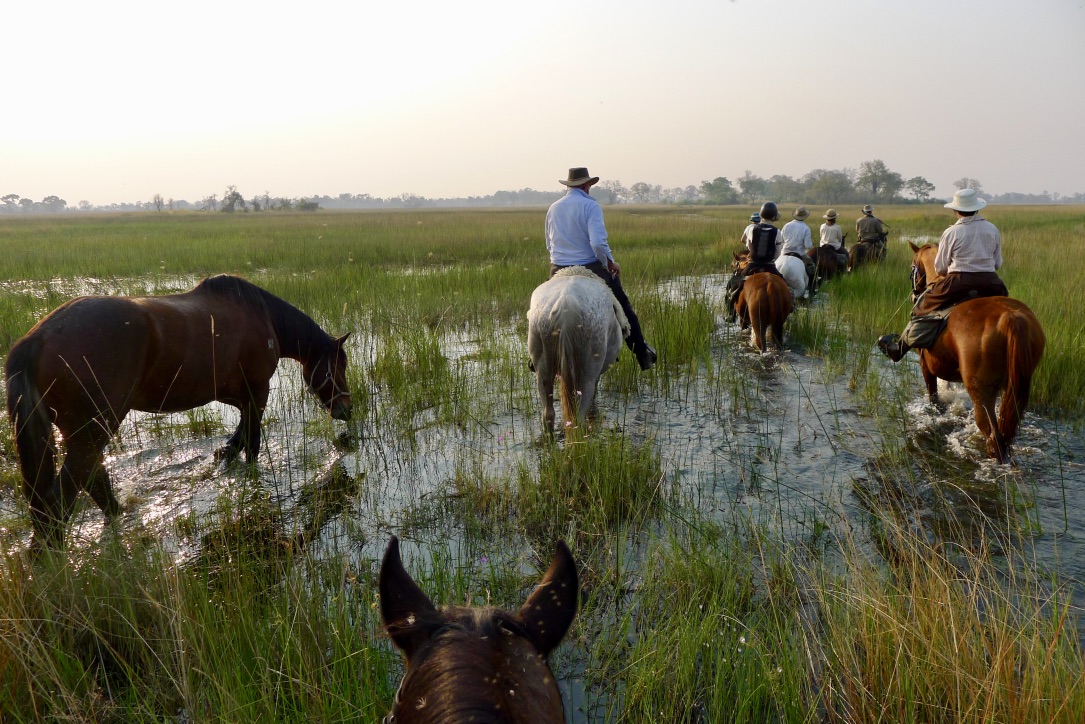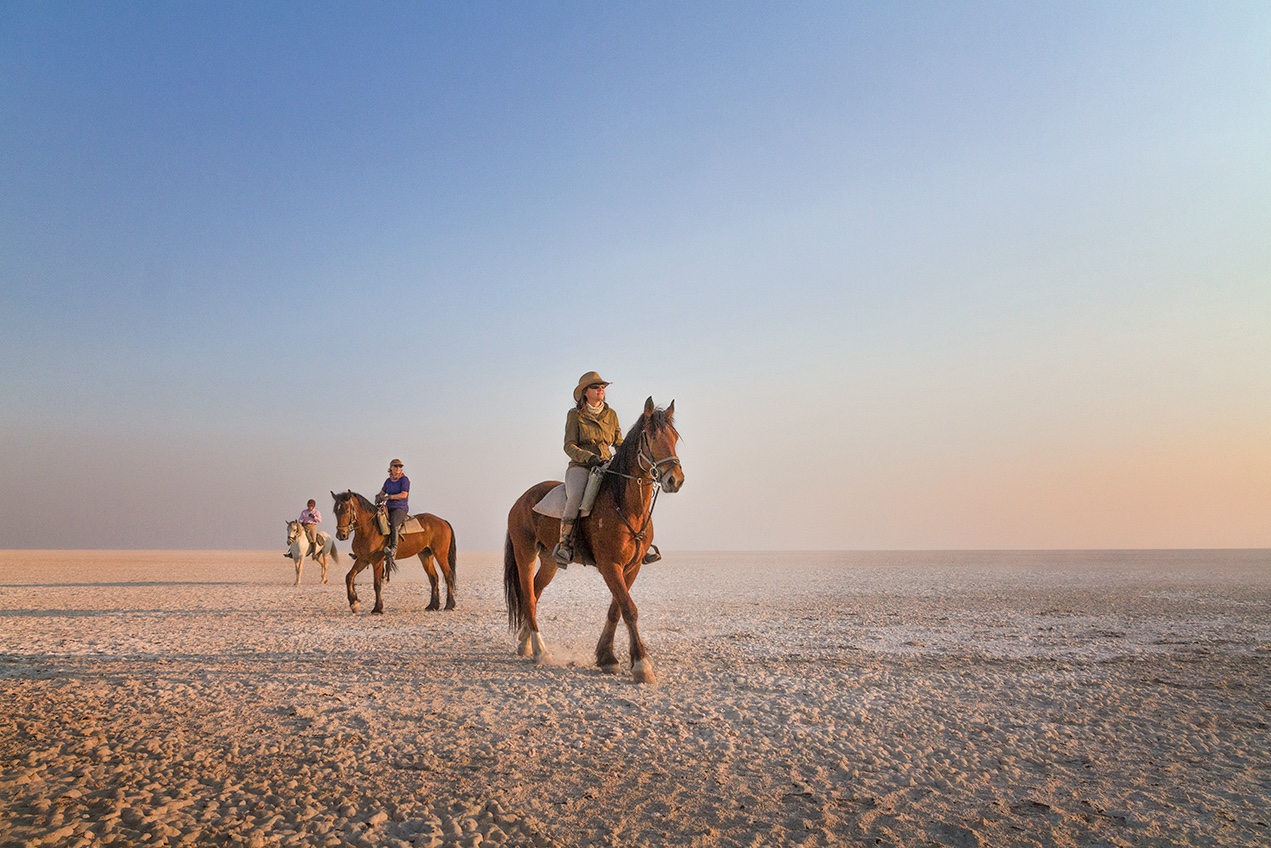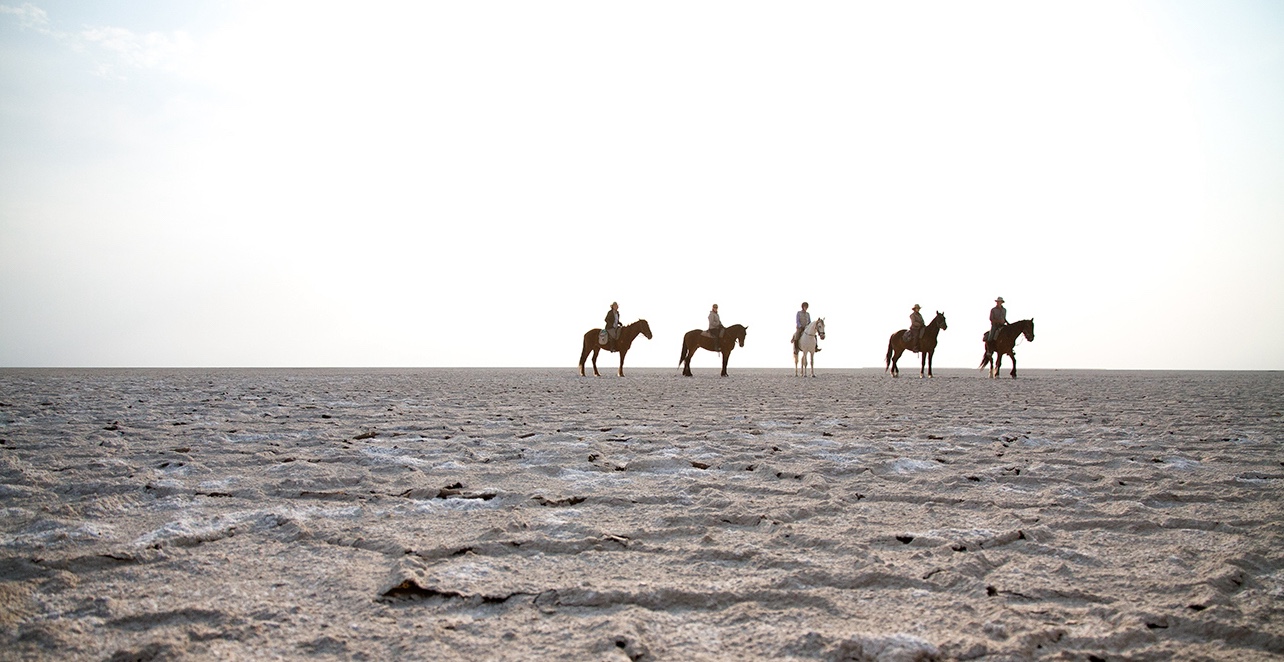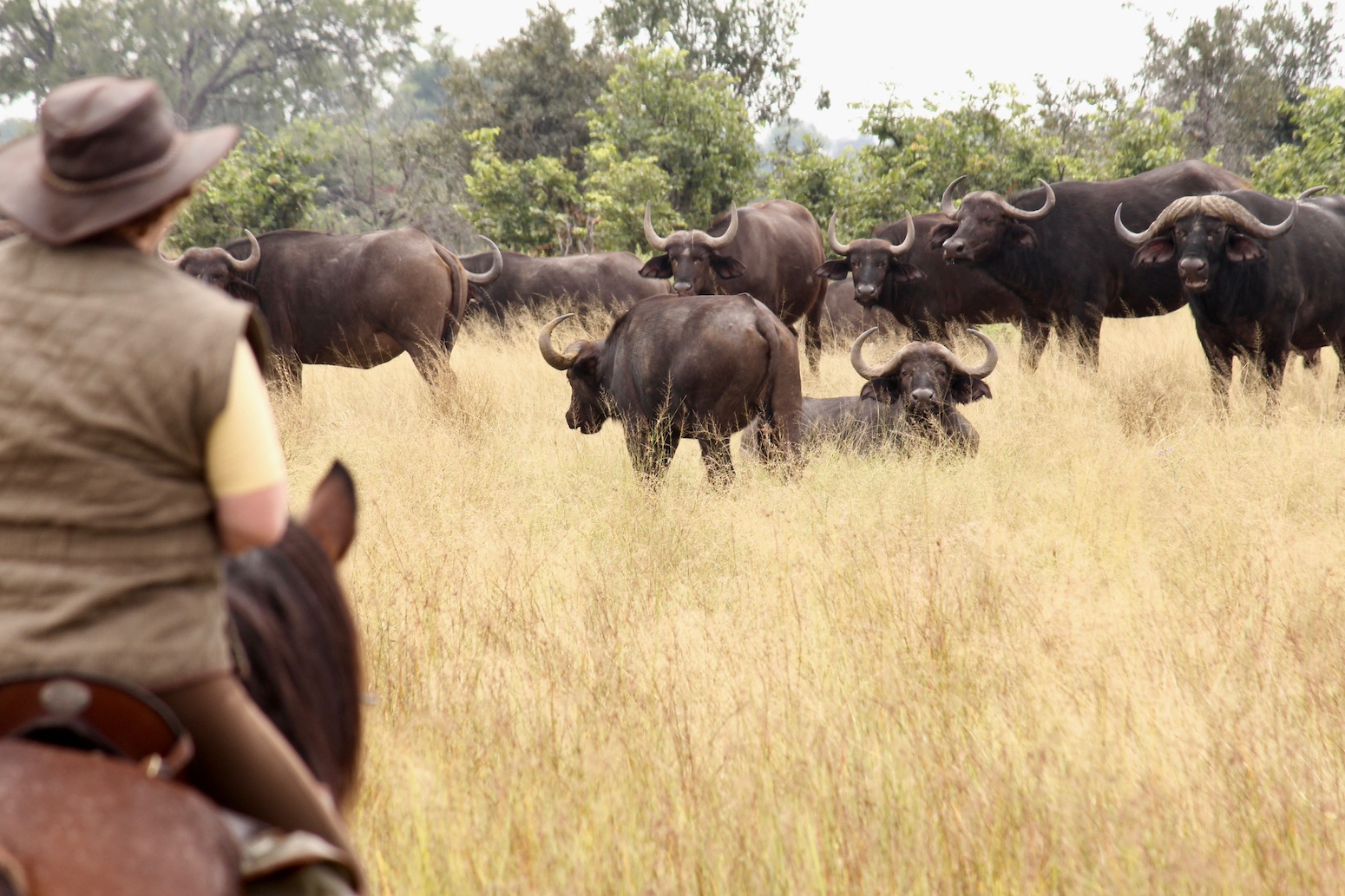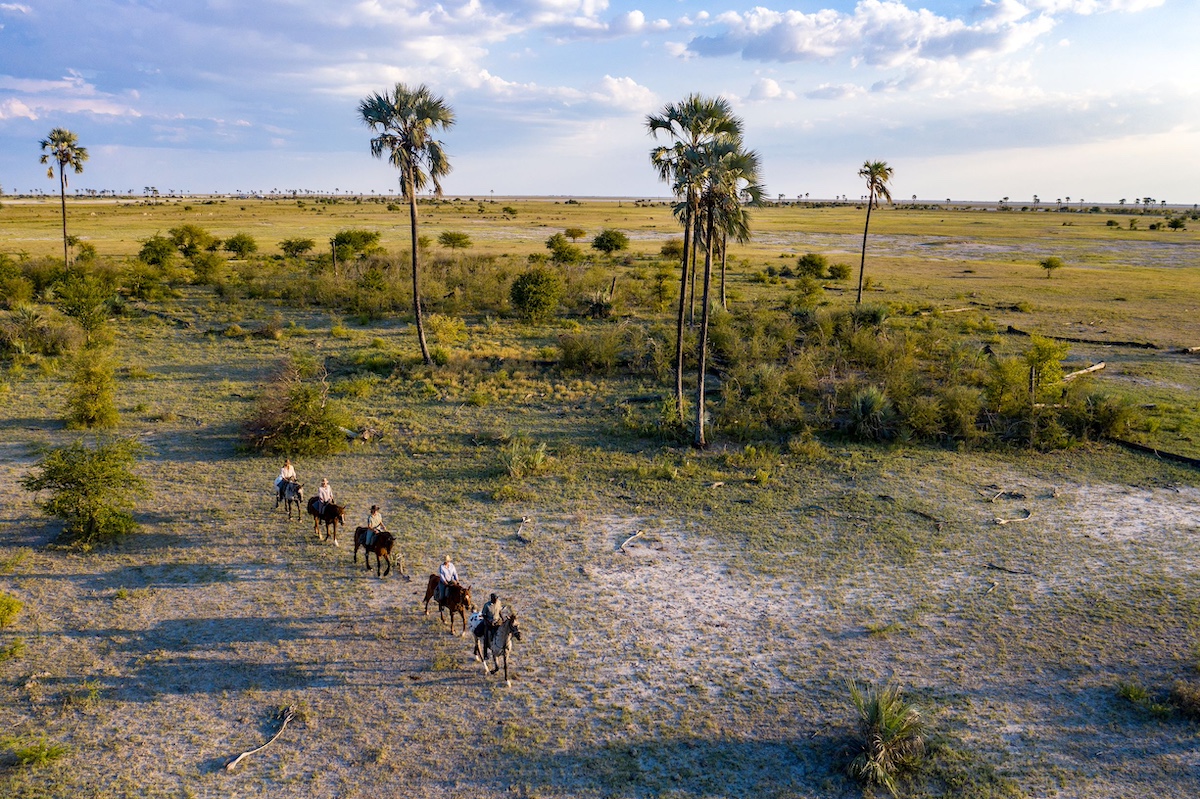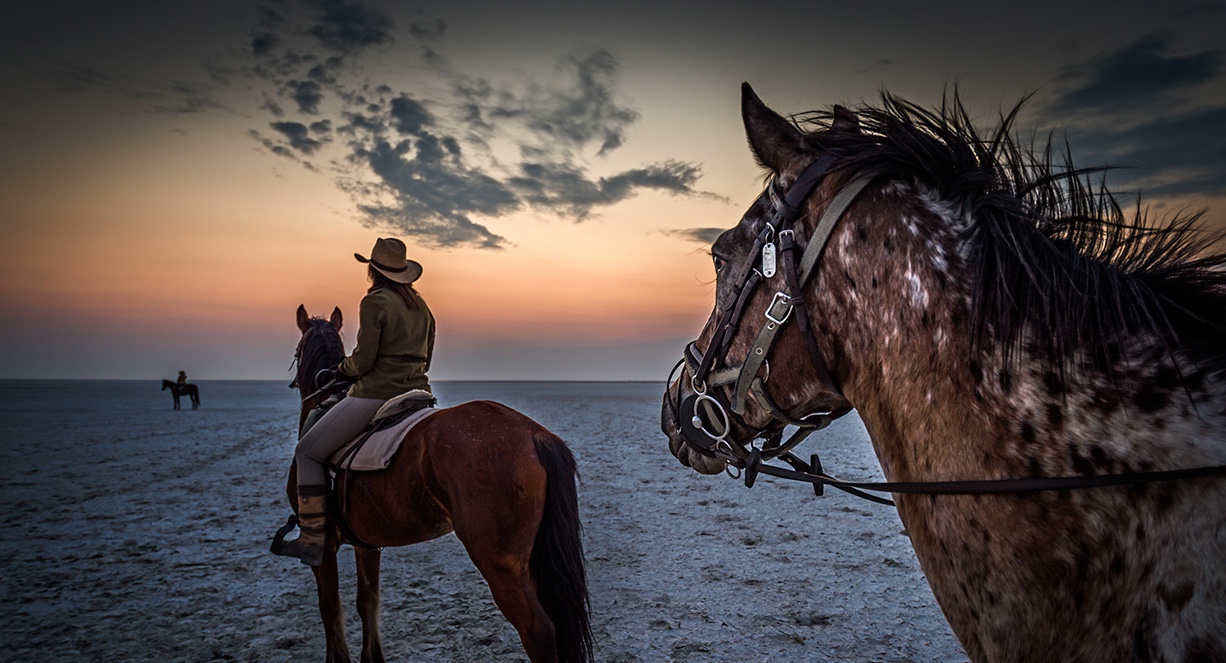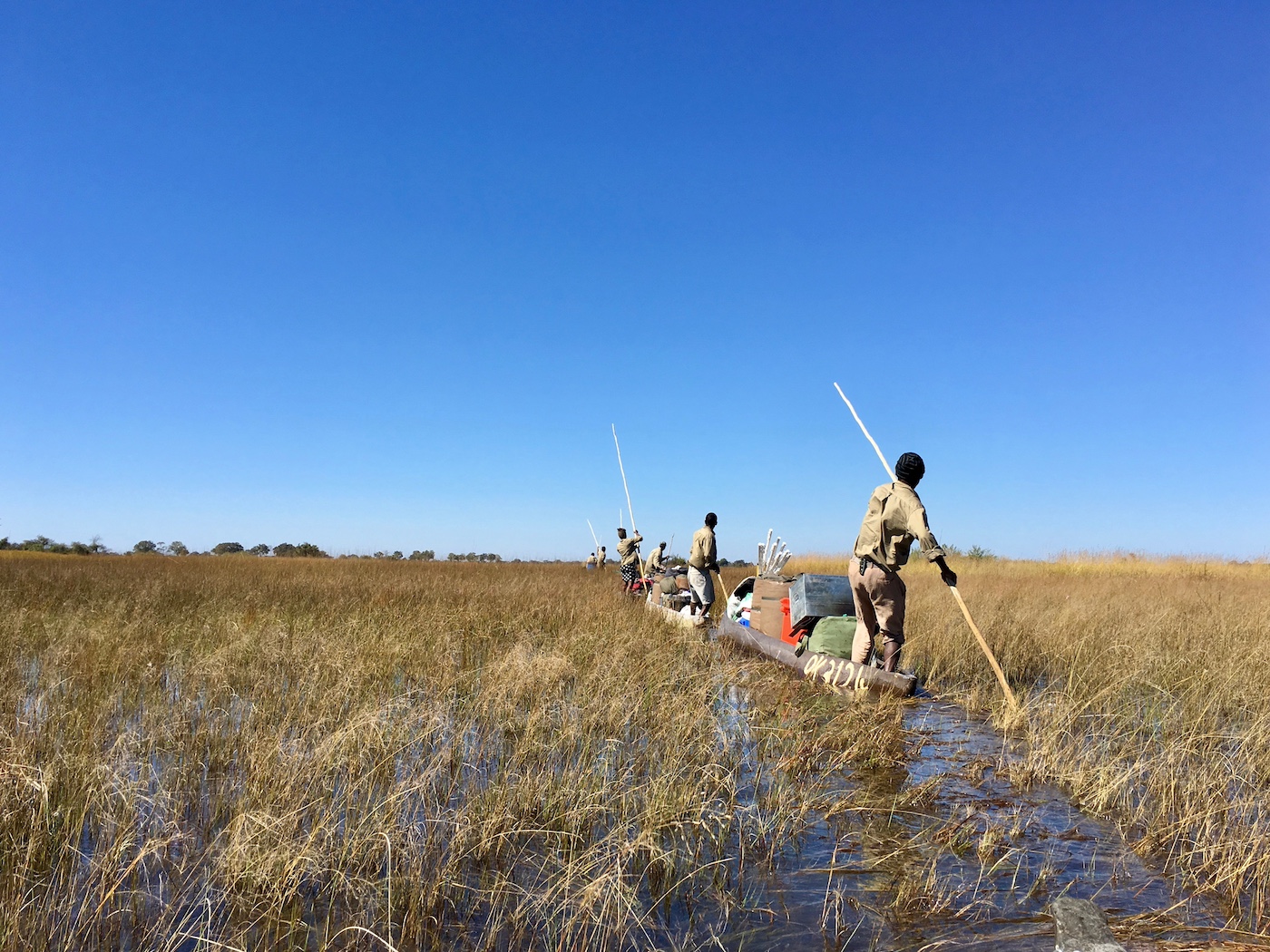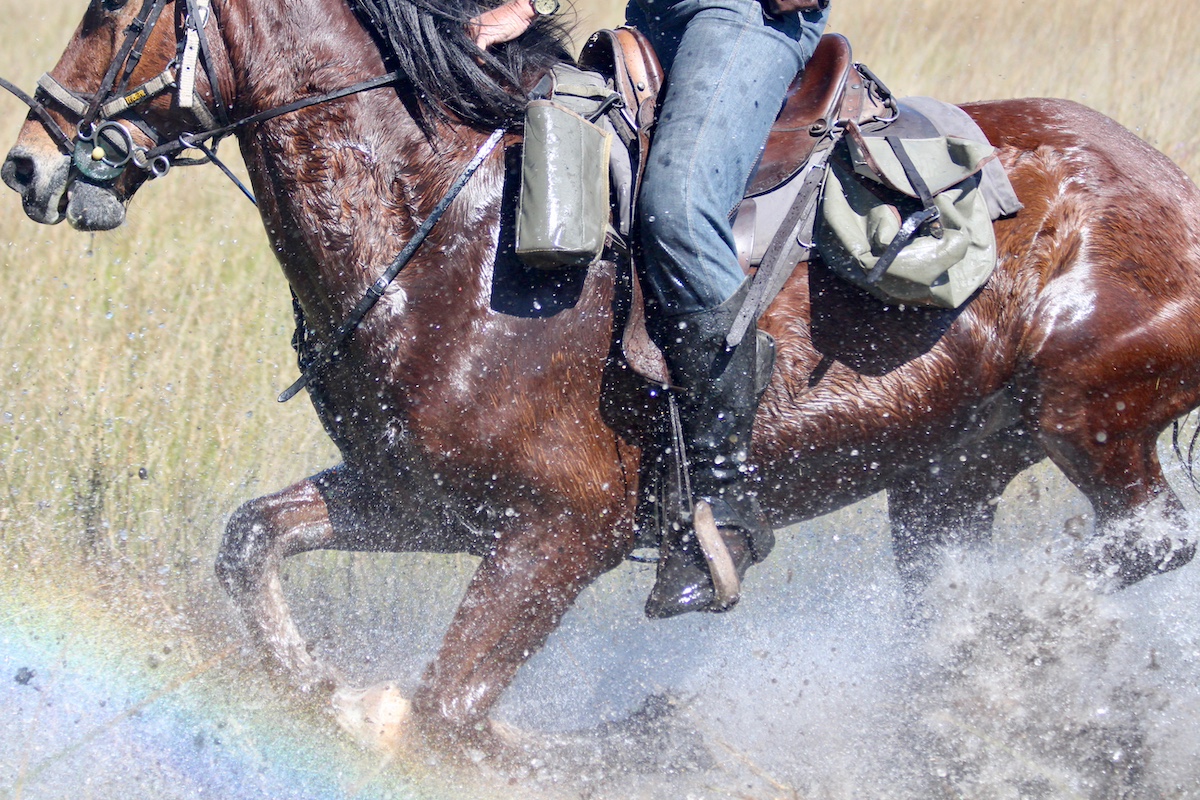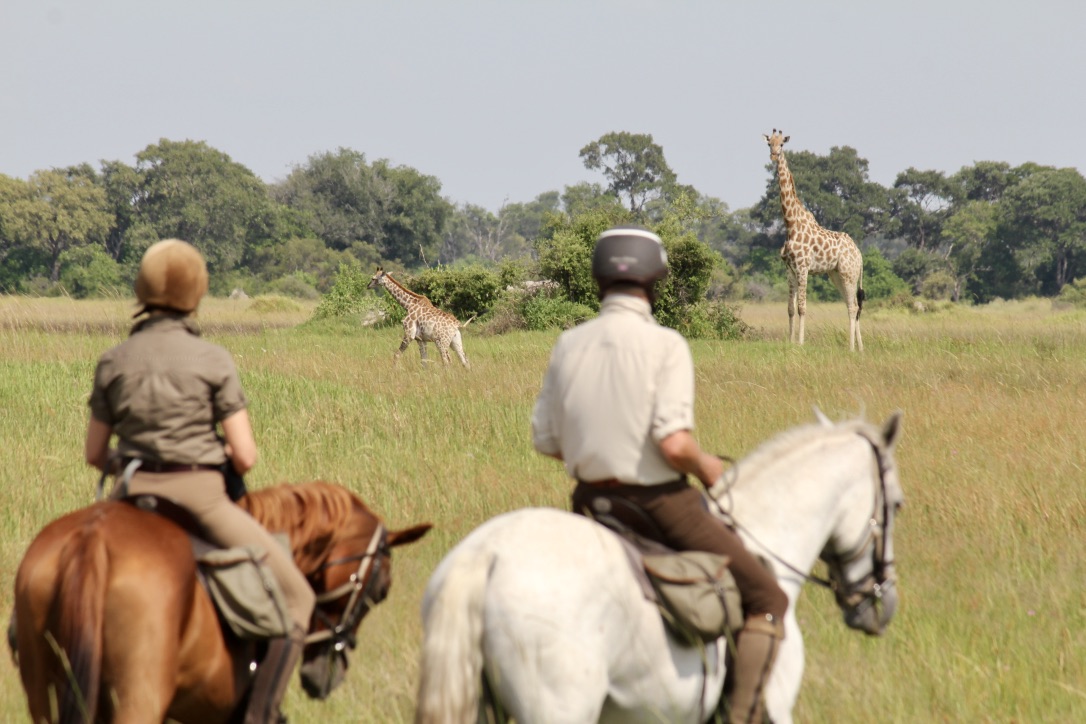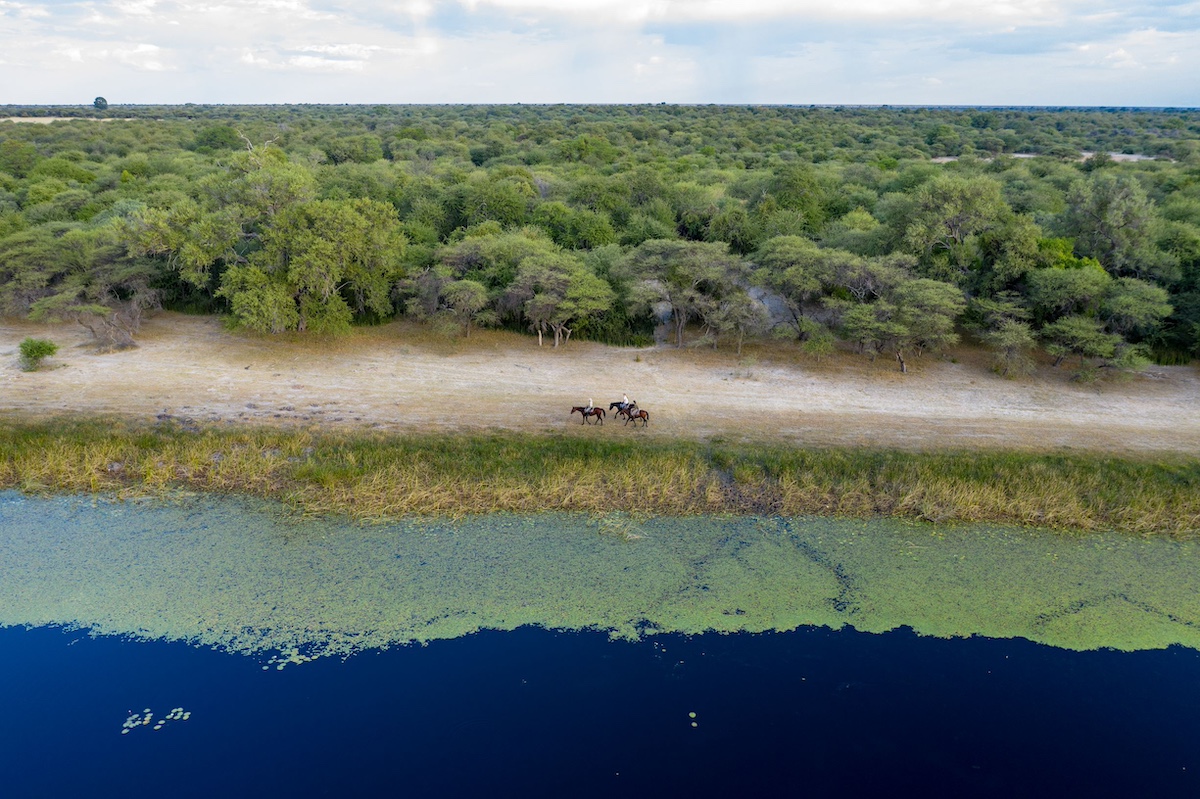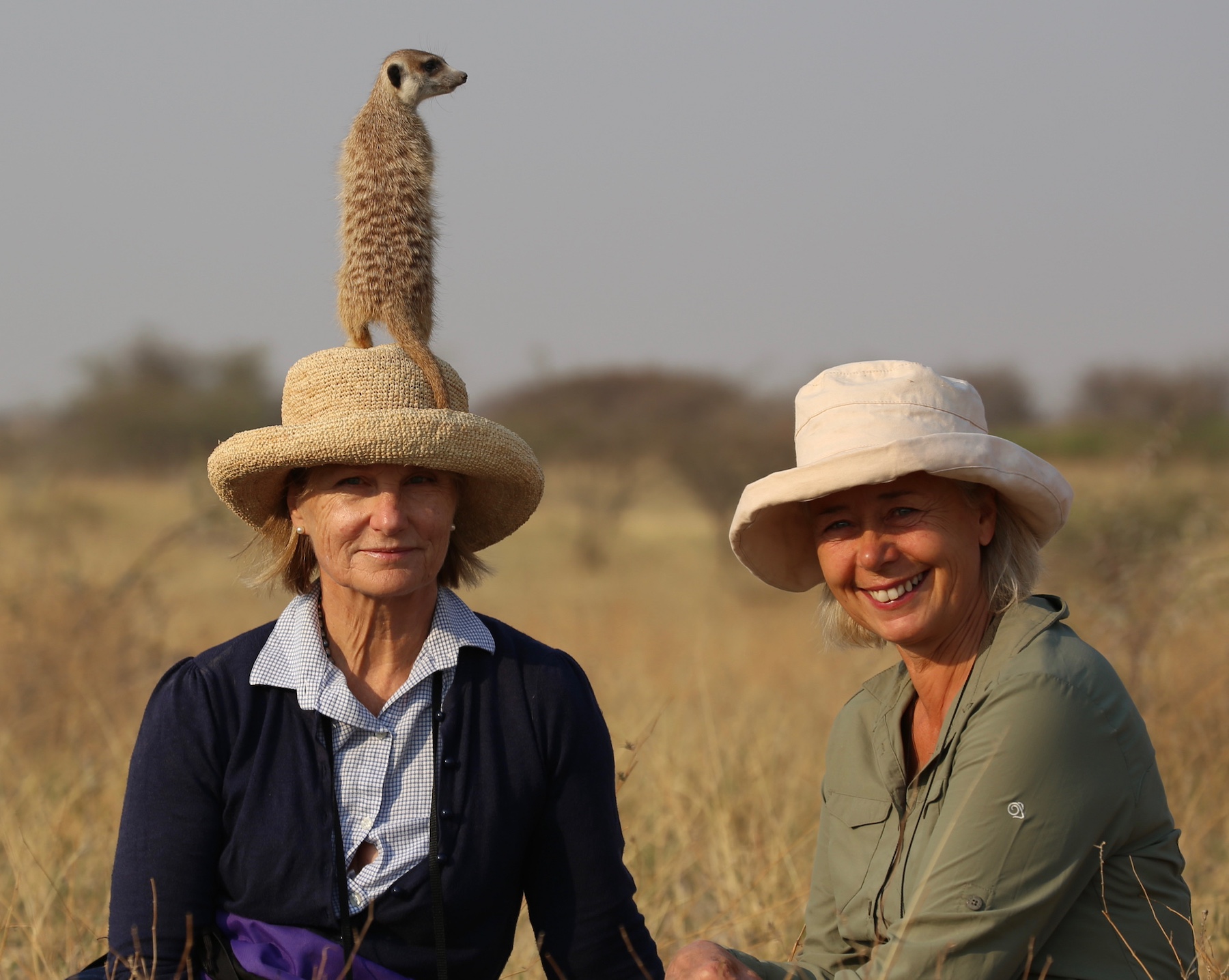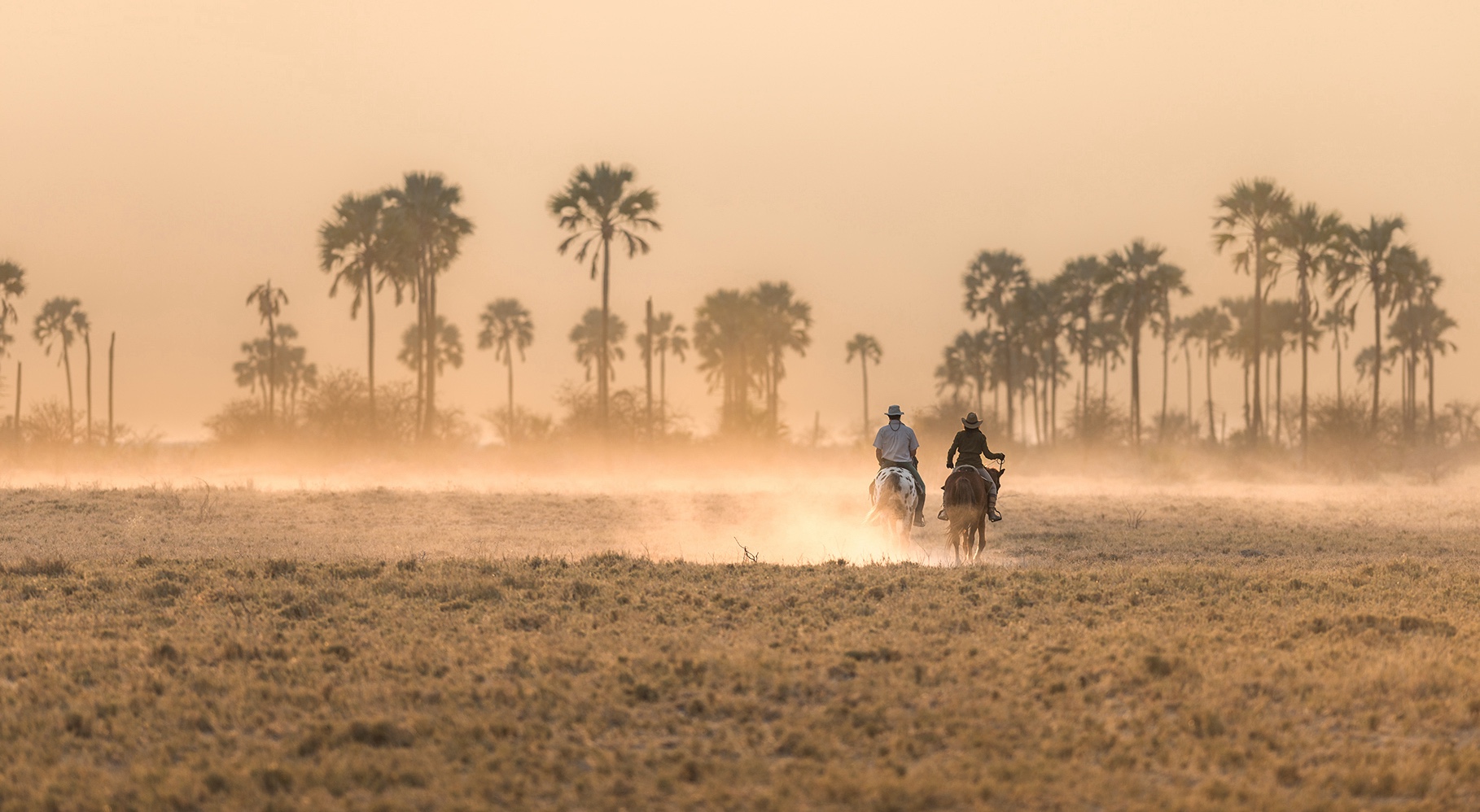Okavango Delta + Kalahari Desert
Okavango and Kalahari
The Delta has its own life, an area as fickle as a Greek God. The water rises and falls at its own whim, the weather can vary so much that it is difficult to set an itinerary: everything depends. Afterwards, the meadows of Kalahari provide a great opportunity to look for wildlife, especially the famous meerkat.
- Location
- Botswana
- Duration
- 9 Days / 8 Nights
- Season
- March - October
- Horses
- Cross breeds which include Shire/TB, Boerperd/TB, Friesian/BP, Arab crosses, Quarter horse crosses.
- The Riding
- 4 – 7 hours per day
Day by Day
Day 1. Welcome.
From the airport of Maun, we are only 30 minutes away by car to the South side of Okavango, where the safari begins in a place known as the “buffalos’ area.” Here, the horses are waiting; the luggage is loaded into mekoro canoes and is transported to the camp while the guests ride and venture on their horses into the Delta.
Day 2. First encounter with elephants.
Exploring this water desert on a horse is, no doubt, unforgettable, especially during the first encounter with elephants, an experience that would not be remotely the same if we did it from a car. Before the sun sets, we ride to an isolated camp on a beautiful remote island.
Day 3. It depends.
What we do that day depends on water levels, the movements of the wildlife, and the duration of the safari. Nevertheless, each place is exquisite since there is a great variety of islands covered by the shades projected by the trees.
Day 4. Ancient elephant paths.
We wake up early in the morning and have a light breakfast around the bonfire at dawn. We spend the morning on horseback, following old elephant paths, looking for a variety of wildlife, enjoying the prolific life of the birds, and going around the plains recently flooded.
Day 5. Giraffes, buffaloes, and antelopes lurk around.
Packs of buffaloes may be close to us, giraffes lurk around, and the Lechwe antelopes splash water over us, while the kudu watches us from the bushes. We head back to the camp to have lunch and take a nap under the shade of big dense trees. We take a night tour to think, listening to the sounds of the bush, and the wheeze and splashing of the horses. Afterwards, we return to the camp and have dinner under the stars.
Day 6. Heading towards the salt pans.
We start relaxed, either on foot or by a short sailing trip, and then travel by plane to the Makgadikgadi salt pans. The new camp is simple but comfortable: it has a straw-bale library, a living room, and a pool to freshen up. In the afternoon, we go for an introductory ride to get in tune with our horses and take a look around the area. We then have dinner and put aside our horses in a safe place before lions get out to make their night rounds.
Day 7. Dunes and salt pans, ideal for exploring on horseback and spotting wildlife.
At dawn, we have a light breakfast and take a long morning ride through the “Land of the Thousand Islands.” Stranded in the bed of the old lake, the sand dunes covered by palm trees are one of the most beautiful and fascinating places in the Botswana desert. The islands and nearby pastures are filled with zebras, wildebeest, hares, and ostriches, and, of course, predators accompanying them. The salt mountains among the islands make it a great place to explore on horseback. In the afternoon, we return and find refuge under the shade to avoid the sun. We can use the pool. Later, we venture out to spot species typical of this arid area, such as gazelles and hyenas. At night, we return in pickups, with lanterns lighting up the animals that cross the road and that we cannot spot during daylight.
Day 8. Baobabs and the millenary origin.
Today we travel East, to the Xau Xai camp. We leave the salt pans and penetrate the mopan and acacia woods, next to the vast meadows that allow us to speed up and gallop towards the horizon. It is possible that we see kudu along the way, and maybe some elephants. At lunchtime, we reach the Baobab wood, named for its millenary and magnificent baobab trees. We have lunch. If we really pay attention, we will find objects from the Stone Age. This is not surprising: after all, we are where humankind originated, the beginning of everything. We then continue our journey until we reach the camp, where we rest, lying on the ground, connecting with the stars and nature.
Day 9. Searching for meerkats.
We wake up to a steaming cup of coffee and prepare ourselves to go out in search of meerkats. We go on foot given that this is a protected species. Meerkats are not docile by nature, but they have grown accustomed to human contact. For instance, on a cold day, one of them may curl up against our body. We watch them interact, move, and control the environment. It is one of the most extraordinary experiences in Botswana. Then, it’s time to head back home.


